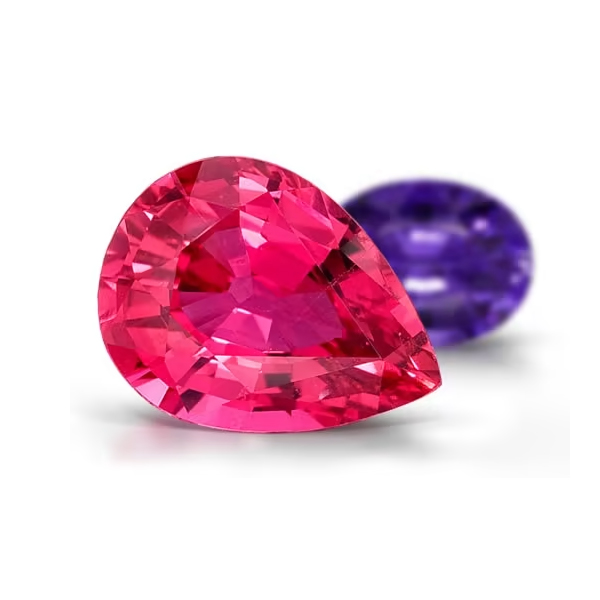The name Spinel comes from the Latin ¨spina¨, meaning ¨thorn¨, due to its sharp and spiny crystalline form.
Spinel has been known since ancient times and was first discovered in Afghanistan. At that time, this stone was reserved for royalty, especially kings, and was offered to other kings from other countries as a symbol of success and wealth.
The Romans often confused spinel with other stones, especially ruby and black tourmaline.
In the 19th century, spinel was mainly used for ornamental purposes in the world of jewelry. It also has magnetic properties and was often used by sailors as a compass to avoid getting lost.
- Color :
- Red Spinel The most well-known and sought-after variety, often confused with ruby. Its color is due to impurities of iron and chromium.
- Blue Spinel A fairly rare variety, ranging from light blue to dark blue. Its color is due to traces of iron and sometimes zinc.
- Pink Spinel One of the most common varieties. Its color is due to impurities of manganese.
- Voilet Spinel A rare variety, its color is due to inclusions of iron and chromium.
- Black Spinel One of the most common varieties. Its color is due to the presence of iron and sometimes titanium.
- Green Spinel One of the rarest varieties, its color is due to the inclusion of vanadium.
- Brown Spinel The least known variety, its color is due to the presence of iron.
- Yellow Spinel The rarest variety of spinel. Its color is due to traces of iron and chromium.
- Colorless Spinel The purest and rarest variety, it contains no impurities.
- Headness : Spinel is number 8 on the Mohs scale
- Origin : The main deposits of spinel are found in Burma, Sri Lanka, Afghanistan, Australia, Brazil, Vietnam, Madagascar and Tanzania. However, the variety differs depending on the deposit.
** Check availability.








